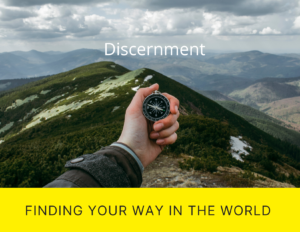

“I am exhausted. The pandemic has completely drained me.”
“Caring for my young children while working is stressful. I have nothing left to give.”
“Constantly worrying for the safety of everyone as I try my best to mitigate risk has depleted me.”
“I am tired and frustrated trying to navigate the politics of mask wearing and vaccinations in the church where I serve. The anger and mistrust directed toward me is almost unbearable.”
“I spent the entire day crying and I don’t even know why. I just couldn’t stop crying.”
“People are taking out their stress and fear on church leaders in a way that grows more and more intense. The exhaustion of my key volunteers, low worship attendance, and declining finances has left me discouraged and frankly hopeless.”
“I have never experienced so many hateful church members. It is nonstop and overwhelming. I have begun thinking about leaving the ministry and am searching for what my next career could be.”
Reality
As a leadership coach for over 10 years, these stories of burnout are troubling. In the fear and chaos of the pandemic we have discovered the gaps that our wishful thinking tried to covered over. Pre-pandemic we were stressed but we still had capacity to function. Now we are coming to terms with the rapid decline of the church as we knew it and all hell is breaking loose!
Faced with the reality of decline, many church leaders have hopped on the flywheel of frenetic programming hoping it will return them to the old normal. If we just start something new, we can resuscitate the church. We need to double down on our social justice initiatives to get traction in our community. When we start singing hymns again, people will come back. Once we find folks to fill our committees we will get back to our programs again.
There seems that a generalized anxiety has descended like a thick fog that is causing us to lose sight of our deep purpose as the body of Christ. It is difficult to put our fears in perspective with the high stakes of climate change, polarization, race relations and institutional decline.
Staying Alive
Dr. Stephen Porges, an expert in developmental psychophysiology and behavioral neuroscience, offers insight into our coping strategies with his research in polyvagal theory. In a nutshell, when we feel threatened, our bodies automatically move into survival in 3 primary ways through our sympathetic and parasympathetic nervous systems.
First, the sympathetic nervous system mobilizes fight and flight in the way of active aggression or escape. When we find ourselves in an unsafe world with unsafe people our nervous systems bypass our brain so that we can be hypervigilant – looking and listening for danger. When we are in fight or flight mode our nervous systems will not allow us to be relational because all of our energy is focused on survival. The world then devolves into broad categories of me vs. you and us vs. them. We see this unfolding in social media, polarized politics and health care with a multitude of conspiracy theories. We also are experiencing this is our churches with frenetic activity, disillusionment, blame and mistrust.
Next, if those responses aren’t enough, the parasympathetic nervous system engages. This is an automatic response into a state of collapse allowing us to dissociate from reality. This protective response allows us to disappear from overwhelming pain and the chaotic world around us. Signs of this include feeling disconnected, numb, foggy, untethered, hopeless, lost and alone.
Trauma
All of these responses – flight, fight and collapse – help us to survive in the moment. But when they get stuck, we move into dysfunction and disease collectively as well as individually.
When we live in a world that serves us more cues of danger than safety, our survival responses continue to activate. We begin to normalize detrimental repetitive stories, conditional beliefs and unhealthy patterns. We can’t access new ideas, novelty or creativity. Change becomes impossible when we are stuck in these trauma responses. I see this trauma playing out at institutional, local and personal levels. Instead of being a sanctuary, the church becomes a microcosm of trauma. This toxicity is now pervasive.
Questions
As a coach whose passion is to help leaders and organizations live into their fullest potentials, I continue to wonder about the possibility of healing and what a pathway forward might look like..
- How can the church be a vessel of healing and connection when many of its leaders are at the point of collapse?
- How can we extend our mission in the world when we are suspicious of others?
- And how efficacious is it to engage in wishful thinking on the flywheel of frenetic programming when we are literally spinning in a place of hurt?
At the 50,000-foot level, the pandemic and institutional unraveling can be an opportunity to ask deep questions, like
- Why are we doing what we are doing?
- What can we offer the world right now as the body of Christ?
- What is the good news that we can authentically proclaim?
- Where is Grace unfolding?
- What can we let go of so we can open more fully to that Grace?
What does healing look like?
At ground level, I just want to gather folks around a campfire, roast marshmallows and listen to stories – our stories about betrayal and redemption, love and hate, heroism and sacrifice. I long to hold your story in me as you hold my story in you. We need to laugh and cry and sigh deeply, braving our way into emotional vulnerablity. For it is only through engaging the wisdom of our emotions that we can begin to heal.
What if we reclaimed sanctuary as a space of refuge and safety so that we could listen deeply to each other?
Could you imagine the power of the church becoming the compassionate holding space for the healing of our collective fragmentation? As a leader the greatest gift we can give right now is our presence in a way that holds the space of curious unknowing.
We are entering the season of winter in the northern hemisphere, a time for the ground to lay fallow as it holds the seeds of promise. Simply taking the time and giving ourselves the space to connect heart to heart can bring us back to life. Maybe that is what Grace is gently offering us right now – the gift of winter renewal.
Sharing our experiences can become the soil out of which healing happens. Basically, this all comes down to being held in love as we become the body of Christ for each other. Our body is the first line of healing. Through deep connection to each other, we actually co-regulate our nervous systems and bring each other back into healthy functioning. As we begin there, a resonant healing balm organically expands outward in ripples of hope. When we focus on healing ourselves, we naturally become healers of others. Could this become the “why” the church has so desperately been looking for as a way to be relevant in the 21st century?
God’s Realm
When Jesus instructed his disciples to go into the enemy territory of Samaria two by two, he essentially said, “Eat with the people you meet and get to know each other because that’s how healing happens. And that’s what I want you to do, heal anyone who is sick.” Dr. Porges would agree. Healing happens when we feel connected to each other, and find meaning and a sense of purpose even in the presence of what is difficult.
Who knows… maybe like those early disciples we might realize that we are not alone. A spark of hope might find its way into our hearts. We might even find ourselves exclaiming to others around the campfire, “I am so grateful for you. Thank you for being here. I think I just might make it after all.”
And so it begins….





No comment yet, add your voice below!